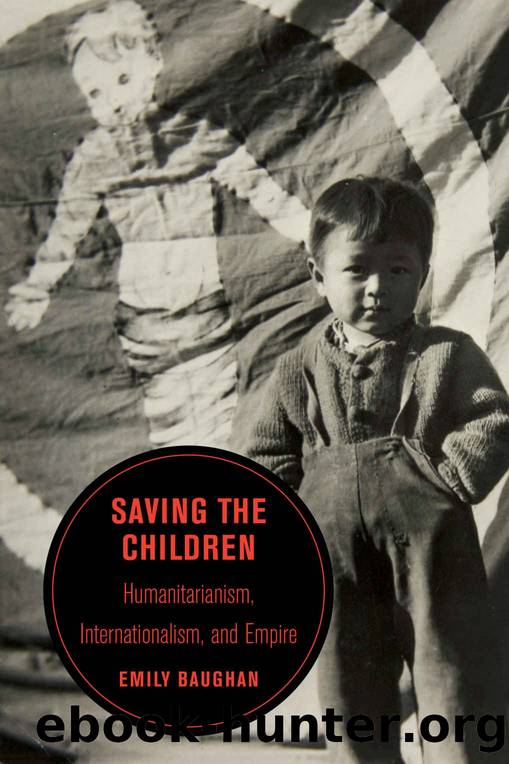Saving the Children (Berkeley Series in British Studies) by Emily Baughan

Author:Emily Baughan [Baughan, Emily]
Language: eng
Format: epub
ISBN: 9780520975118
Publisher: University of California Press
Published: 2021-11-23T08:00:00+00:00
âA MALAYAN EXPERIMENT IN TRAINING IN CITIZENSHIPâ
The lines of influence in the increasingly global work of Save the Children were tangled. It was not the case that work in Europe provided the model for work in the empire: in the postwar periods European and colonial projects were forged in tandem, and the empire often provided a site of experimentation for practices that came back to Britainâs shores. This was the case for Hill House, which was modeled on a project begun in Malaya two years earlier: the Serendah Boys School. Like Hill House, Serendah promised to provide care for war-damaged youths and juvenile delinquents. Serendah was, in turn, influenced by youth rehabilitation schemes that had been piloted in central Europe in the immediate aftermath of war, both in reformatories and displaced persons camps. In both, ârehabilitationâ encompassed not only psychological rehabilitation from the horrors of war or involvement with criminality, but also training in new trades to produce self-sufficient citizens of the future. Rehabilitation could be achieved through labor, creating the capacity for economic self-sufficiency following a period in which an individual had been reliant on governing authorities or aid organizations for their material needs.57 In this tradition, Serendah also provided a form of ârehabilitationâ by using âeducational facilities and training in certain trades so that they could become useful citizens.â58
Through Serendah, the Fund was not just seeking to rehabilitate children, but to strengthen the British Empire in the aftermath of the war. Between 1941 and 1945, Malayaâformerly a collection of British protectoratesâhad been under Japanese occupation. During the occupation, an estimated one hundred thousand Malayans were killed, forty thousand people were displaced, and malnutrition and disease were endemic.59 Recognizing the scale of the crisis, the Military Administration appealed to British humanitarian organizations for staff to be relocated to Malaya.60 Enthusiastic about expansion into the empire, Save the Childrenâs new general secretary, Tony Boyce, agreed that the âproblem of unaccompanied and destitute children in Malaya was as pressing as [that] in mainland Europe.â Boyce argued that the foremost concern of the Colonial Office should be adolescent boys, many of whom had left for the capital city seeking work or had otherwise been separated from their parents. As in Europe, young men were blamed for a rapid rise in youth crime, as some stole and looted to support themselves.61 They were also, Boyce feared, being lured into Communist and anti-colonial youth leagues. Just as the stability of Europe was contingent on the emotional well-being of European youth, Boyce claimed that in Malaya humanitarian interventions in the lives of adolescent boys was vital for âthe stabilisation of Malaya and the re-establishment of British rule.â62
Serendah was a former hospital, donated to the Fund by the British High Commissioner for Malaya, and the day-to-day expenses of the school were also covered by the Colonial Office via its Juvenile Delinquency Fund, an empire-wide fund established in 1946 to deal with the ârising problemâ of youth crime.63 None of the schoolâs first intake of fifty-two boys,
Download
This site does not store any files on its server. We only index and link to content provided by other sites. Please contact the content providers to delete copyright contents if any and email us, we'll remove relevant links or contents immediately.
| Africa | Americas |
| Arctic & Antarctica | Asia |
| Australia & Oceania | Europe |
| Middle East | Russia |
| United States | World |
| Ancient Civilizations | Military |
| Historical Study & Educational Resources |
Machine Learning at Scale with H2O by Gregory Keys | David Whiting(3646)
Never by Ken Follett(3536)
Fairy Tale by Stephen King(2955)
The Man Who Died Twice by Richard Osman(2812)
Oathbringer (The Stormlight Archive, Book 3) by Brandon Sanderson(2645)
Will by Will Smith(2582)
Rationality by Steven Pinker(2151)
The Dark Hours by Michael Connelly(2082)
The Dawn of Everything: A New History of Humanity by David Graeber & David Wengrow(2018)
Friends, Lovers, and the Big Terrible Thing by Matthew Perry(2005)
Can't Hurt Me: Master Your Mind and Defy the Odds - Clean Edition by David Goggins(2004)
Principles for Dealing With the Changing World Order: Why Nations Succeed and Fail by Ray Dalio(1900)
HBR's 10 Must Reads 2022 by Harvard Business Review(1698)
A Short History of War by Jeremy Black(1672)
Go Tell the Bees That I Am Gone by Diana Gabaldon(1601)
515945210 by Unknown(1522)
443319537 by Unknown(1396)
Kingdom of Ash by Maas Sarah J(1393)
A Game of Thrones (The Illustrated Edition) by George R. R. Martin(1374)
